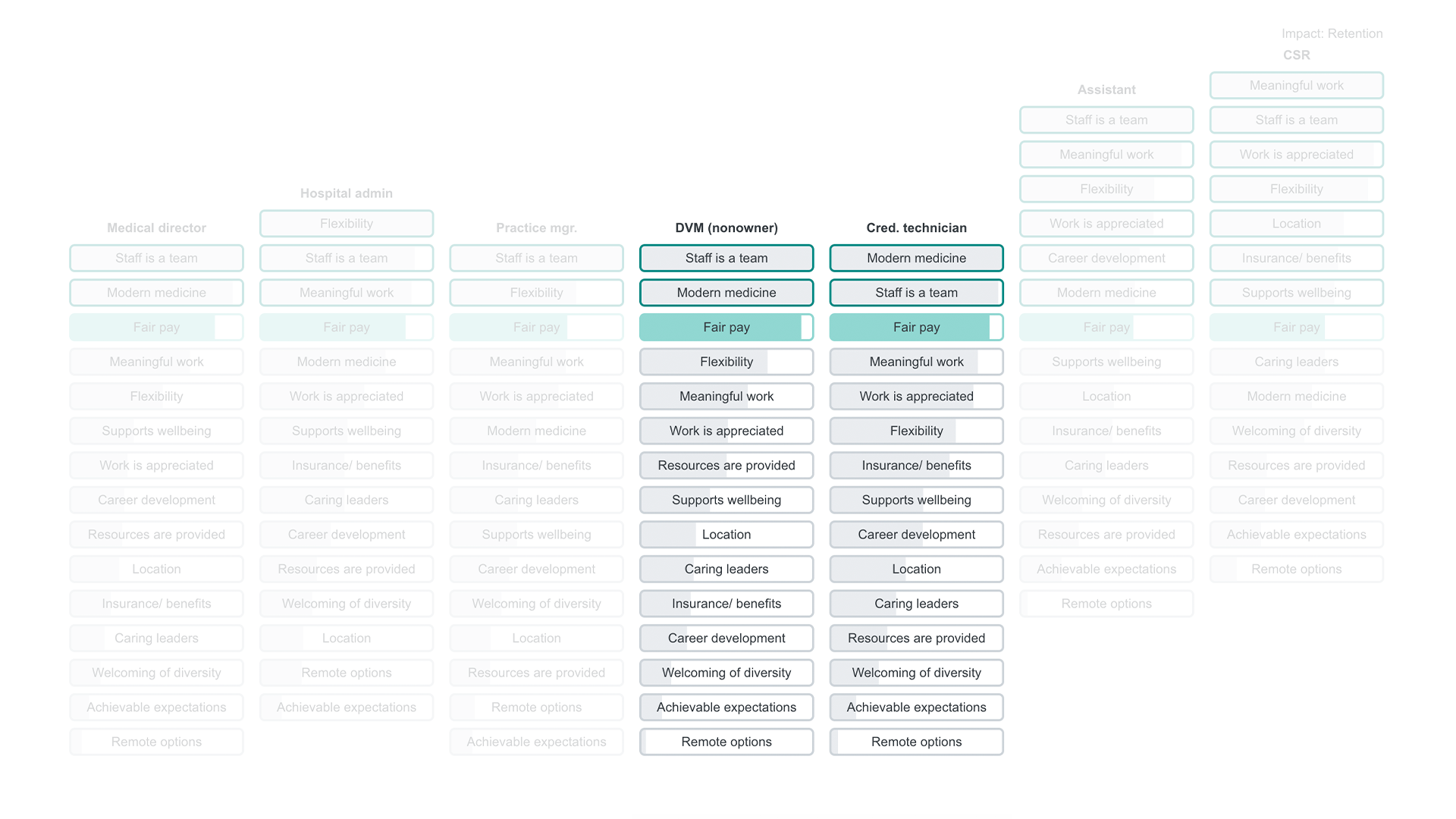Vet med career personas from the AAHA retention study

Approximately 13.5% of the estimated 189,000 credentialed technicians and DVMs currently in the United States are planning to leave veterinary medicine within the next year and never return, according to independent research by AAHA outlined in the free white paper “Stay, Please” (aaha.org/retention-study).
Adding nonclinical roles to those projections only makes it worse. The bottom line is: There are too many skilled, trained veterinary professionals planning to leave than can be replaced by new graduates while maintaining the level of care demanded by the field.
But there are steps practices can take. AAHA’s retention study identified areas where changes to workplace culture and leadership can go a long way toward keeping good employees—especially those that take the longest—and cost the most—to replace.
Veterinary career personas
The AAHA white paper and interactive graphics help focus the findings on specific job roles and three key career personas, which were based on the statistical likelihood of a role to remain in their job, leave their current job but remain in veterinary medicine (whether that’s another practice or an industry job), or leave veterinary medicine for a different field entirely):
Loyal to practice
This persona consists of owners, hospital admins, practice managers, and medical directors. These roles were most likely to say they planned to stay where they were.
Dedicated to vet med
This persona consists of nonowner DVMs and credentialed techs, who are devoted to vet med but not necessarily their current job (or clinical practice as a whole).
Open to options
This persona consists of uncredentialed techs and CSRs who are most likely to see their current role as a job rather than a career. They are far more likely than any other persona to leave vet med entirely. This doesn’t mean they aren’t committed to veterinary medicine, but they’re more than twice as likely to leave the field.

Where to begin?
According to a 2022 staffing survey by AAHA, replacing full-time DVM, CVT, RVT, or LVT positions is a significant challenge. On average, it takes over a year to fill these positions. For many practices, focusing on this particular persona is a logical starting point.
The values named by the dedicated to vet med persona (associate DVMs and credentialed techs) are highlighted below. Notice that they are shaded in gray—the amount of gray indicates how strongly each factor impacts retention (the reasons they stay in their jobs).

If your practice is ready to create a retention plan for associate DVMs and credentialed technicians, improving teamwork and keeping up with medical breakthroughs is key.
Ready to keep exploring this data? Go to aaha.org/retention-study to download the free white paper “Stay, Please” and access the interactive graphics.
This article is part of our Stay, Please series, which focuses on providing resources (as identified in our Stay, Please retention study) to retain the 30% of all veterinary professionals considering leaving their clinical practice. Here at AAHA, we believe you were made for this work, and we’re committed to making clinical practice a sustainable career choice for every member of the team.
Cara Hopkins is AAHA’s Managing Editor.
Cover photo credit: © SeventyFour Images E+ via Getty Images Plus
Disclaimer: The views expressed, and topics discussed, in any NEWStat column or article are intended to inform, educate, or entertain, and do not represent an official position by the American Animal Hospital Association (AAHA) or its Board of Directors.
NEWStat Advancements & research News Interesting/unusual Practice management Retention Study



